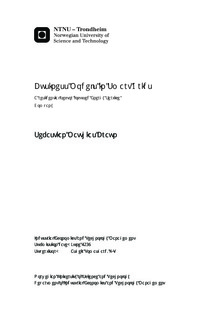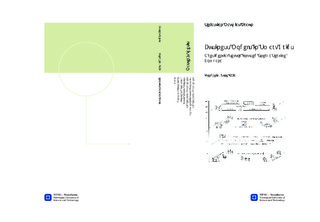| dc.description.abstract | This thesis showed that the business model of an ESCO under certain conditions can operate profitable. This is especially because of the assumption that the local DSO is willing to pay for provided flexibility. Using this flexibility, grid reinforcements can be postponed. The business model of the ESCO can easily be applied on other regions with bottlenecks, shortages or similar problems. Operating in more than one region will generate economies of scale. In the following a short overview about the thesis will be given. Every chapter will be revised and discussed how it contributed to the results as well as possible obstacles and results will be worked out. Chapter 2 gave an overview about the electricity supply chain and what is important when implementing a new player on the market. Chapter 3 dealt with smart grids including DSM potential, smart homes and already existing new players on the energy market. Chapter 4, e-mobility, considered positive and negative aspects of EV and their integration into the grid; a special focus was on the battery. Chapter 5, micro-CHP, gave an overview about the wide and complicating flied of CHP technologies and their possibilities for DSM. A short calculation revealed that CO2 reductions of micro-CHP systems are at least questionable. From an environmental point of few, CHP plants should generally run on biofuels. Subsequently, after the information about the supply chain and smart grids as well as the new technologies EV and CHP also an introduction into business models has been given in chapter 6. A wide range of definitions, models and frameworks is known from the literature. Especially the business model canvas was introduced due to the fact that it is the most widely used model and especially in entrepreneur circles very common. Therefore it was used to generate the business model of the ESCO and helped especially during the creativity process. Chapter 7 described the results of the modulation in the casestudy region Florø. The influences of micro-CHP, energy savings, DSM and EV on the energy demand were presented and discussed. Challenges accrued from collecting data, building up the model and to replace missing data by smart and reasonable assumptions. Most assumptions refer to similar projects and models and were chosen conservatively. Increasing demand and fluctuating energy demand stress the grid. A need for DSM or a grid reinforcement was identified. A business model of an ESCO that fits the requirements of the test region was developed in chapter 8. The market situation, competitors, the unique selling proposition, the customer benefits and the finance plan were worked out. Chapter 9, the ESCO in practice, used the simulation results of chapter 7 and compard the revenue streams of EV, mico-CHP and DSM with the corresponding costs of ICT, charging station, smart meter, DSM and micro-CHP. The cost side was represented very detailed to identify synergies. The ESCO generated synergies when its customers installed more than one technology. This influenced the selling offer. Offers that just contained DSM were basically unprofitable. The more technology a customer installed the higher the savings for him or her and the higher the profits for the ESCO. The practicability of an ESCO in the German context was identified as critical due to missing DSO payments. More elaborate optimization models might use the variations of the German spot price in order to generate enough profit. | nb_NO |

